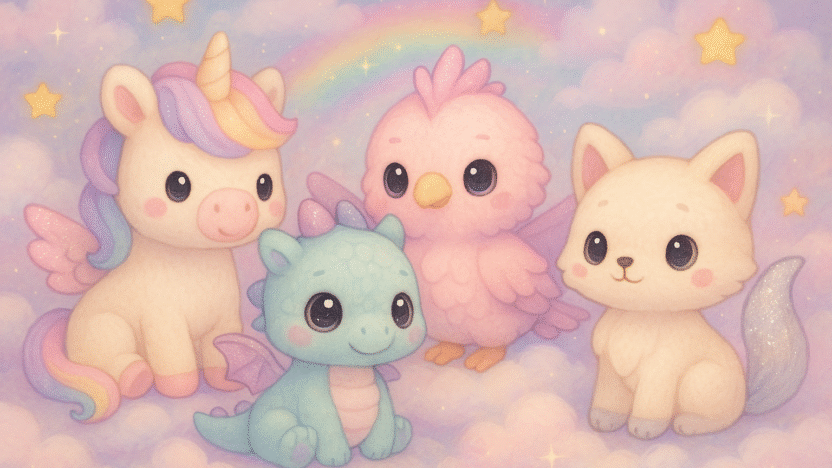Stuffed animals and plush toys are more than just adorable companions. They hold memories, provide comfort, and often become cherished collectibles. Whether it’s a childhood teddy bear or a themed plush from your favorite series, taking proper care of these soft toys is essential to ensure their longevity and fluffiness.
In this guide, you’ll learn how to clean, maintain, and store your plush toys so they stay as cuddly and soft as the day you got them.
Why Proper Care for Stuffed Animals Matters
Over time, stuffed animals and plush toys accumulate dust, bacteria, and general wear. Regular maintenance not only keeps them looking great but also helps preserve their sentimental and hygienic value. Clean, well-maintained plush toys are also safer for children, especially those with allergies or sensitive skin.
How to Clean Stuffed Animals at Home
Spot Cleaning for Light Maintenance
For minor stains or surface dirt:
- Use a soft cloth or sponge dampened with mild soap and water.
- Gently dab the affected area—avoid soaking the fabric.
- Allow it to air dry in a well-ventilated space.
Spot cleaning is ideal for delicate plush toys that might be damaged in the wash.
Machine Washing – What You Need to Know
Many modern stuffed animals are machine washable, but always check the care label. Here’s how to do it safely:
Step-by-Step Guide
- Use a Pillowcase or Laundry Bag
Place the plush inside a pillowcase or mesh laundry bag to protect it during the cycle. - Select Gentle Settings
Use cold water and the delicate or hand-wash cycle. - Mild Detergent Only
Avoid strong chemicals that could damage the fabric or stuffing. - Air Dry Completely
Never use a dryer. Lay the toy flat or hang it to dry naturally.
This method is best for sturdy plush toys without electronic parts or glued accessories.
Hand Washing for Delicate Plush Toys
If your stuffed animals are antique, hand-stitched, or very fragile, hand washing is safer.
Hand Washing Instructions
- Fill a basin with cold or lukewarm water.
- Add a small amount of baby shampoo or gentle detergent.
- Gently submerge and massage the toy.
- Rinse thoroughly with clean water.
- Press out excess water with a towel and air dry.
Be gentle—rubbing too hard may misshape or damage delicate fabrics.
How to Keep Plush Toys Fluffy After Washing
Washing can cause plush toys to lose their softness. Here’s how to restore that fluffy texture:
- Brush the Fur: Use a soft-bristle baby brush once the toy is dry to fluff the fur.
- Shake and Pat: Lightly shake or pat the toy to help re-fluff the filling.
- Steam Treatment: Hold the toy near steam (not too close) and brush gently to loosen matted fabric.
Maintaining the plush’s shape and fluffiness increases its appeal and comfort value.
Storing Your Stuffed Animals the Right Way
Improper storage can lead to mold, fading, or flattened stuffing. Here are some smart storage solutions:
H3: Tips for Everyday Storage
- Use breathable bins or open shelves to avoid trapping moisture.
- Rotate toys occasionally if displayed to prevent dust buildup on one side.
- Avoid placing stuffed animals near direct sunlight to prevent color fading.
Long-Term Storage
- Wrap each toy in acid-free tissue paper or cotton cloth.
- Place them in a sealed plastic container with a few silica packets.
- Store in a cool, dry place away from heat and humidity.
Avoid vacuum-sealing unless you’re prepared for the plush to lose volume, as it compresses the stuffing.
Repairing Common Plush Toy Problems
Even with care, plush toys can suffer minor damage. Here’s how to fix common issues:
Loose Seams
- Use a needle and thread that matches the toy’s color.
- Make small, tight stitches to prevent further unraveling.
Flattened Stuffing
- Carefully open a seam and add fresh polyester fiberfill.
- Stitch it back neatly to maintain the toy’s shape.
Detached Accessories
- Reattach loose eyes, bows, or buttons using non-toxic fabric glue or sewing.
If the toy has sentimental or collector’s value, consider professional repair services.
Tips to Preserve the Value of Collectible Plush Toys
Some stuffed animals become collectible over time. Preserving their condition can help retain or increase their value.
- Keep tags and original packaging when possible.
- Handle with clean hands to avoid transferring oils or dirt.
- Document purchase details and store in climate-controlled environments.
Collectors often invest in display cases or protective glass shelves to showcase their plush toys without exposing them to dust or damage.
How Often Should You Clean Stuffed Animals?
Cleaning frequency depends on usage:
- Every 2–3 weeks for toys used daily by children
- Monthly for decorative plush toys
- Seasonally for collectible or rarely handled stuffed animals
Frequent maintenance reduces the risk of damage and keeps the toy in top condition.
Conclusion: Love Your Plush, Keep It Plush
Your beloved stuffed animals and plush toys deserve proper care to keep them clean, safe, and cuddly. Whether you’re maintaining a child’s bedtime buddy or preserving a cherished collector’s item, these steps ensure they remain soft, fluffy, and full of life for years to come.



